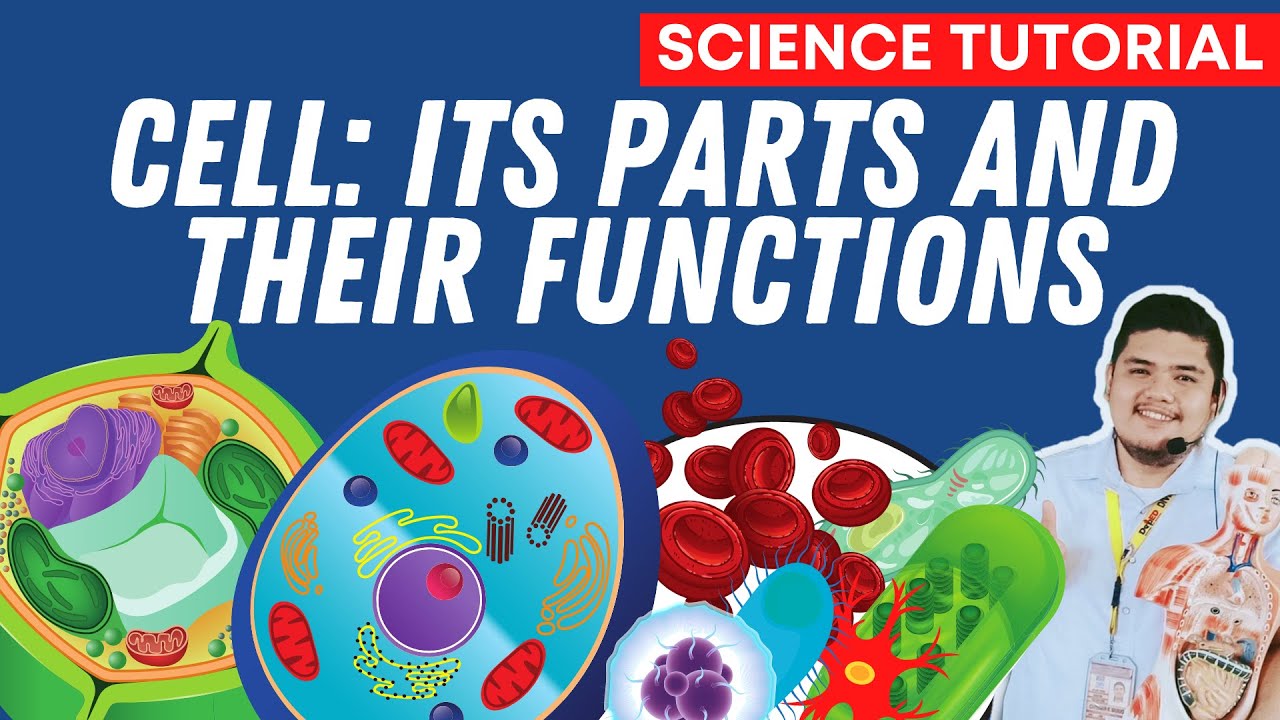Sistem Organisasi Kehidupan | Sel sebagai Unit Struktural dan Fungsional Kehidupan - IPA Kelas 7
Summary
TLDRThis educational video focuses on the cell as the basic structural and functional unit of life. It explores the history of cell theory, beginning with Antony van Leeuwenhoek's invention of the microscope. Key discoveries by scientists like Robert Hooke, Schleiden, Schwann, and others are highlighted, leading to the formulation of theories about cells. The video explains the differences between prokaryotic and eukaryotic cells, detailing their structures and functions. It also introduces various cell organelles, their roles, and the distinct differences between plant and animal cells, concluding with a call for continued learning and health awareness.
Takeaways
- 😀 Cells are the basic structural and functional units of life, capable of carrying out all vital processes such as energy processing, growth, response to stimuli, and reproduction.
- 😀 The discovery of cells began with the invention of the microscope by Antony Van Leeuwenhoek, enabling scientists to study cell structures more easily.
- 😀 Robert Hooke observed cells in cork tissue and coined the term 'cell' due to their resemblance to honeycomb structures.
- 😀 Schleiden and Schwann concluded that cells are the smallest units of plants and animals, respectively, after observing plant and animal tissues.
- 😀 Robert Brown identified the nucleus, a vital component of living cells that regulates internal cell processes.
- 😀 The discovery of protoplasm by Felix Durjadin and Johannes Parkin led to the identification of cytoplasm as the medium for life processes within cells.
- 😀 The theory of cells asserts that cells are structural, functional, reproductive, and hereditary units of living organisms.
- 😀 There are two main types of cells: prokaryotic and eukaryotic. Prokaryotic cells lack a membrane-bound nucleus, while eukaryotic cells have a true nucleus.
- 😀 Prokaryotic cells are found in organisms like bacteria and cyanobacteria, whereas eukaryotic cells are present in organisms such as animals, plants, fungi, and protists.
- 😀 Eukaryotic cells have a complex internal structure, including membrane-bound organelles like mitochondria, the endoplasmic reticulum, Golgi apparatus, and more.
- 😀 The differences between plant and animal cells include features like the presence of a cell wall and chloroplasts in plant cells, which are absent in animal cells.
Q & A
What is the primary function of a cell in an organism?
-The cell is the smallest structural unit capable of performing all vital life functions, including energy processing, growth, response to the environment, and reproduction to ensure the survival of the species.
What discovery did Robert Hooke make related to cells?
-Robert Hooke discovered that the smallest units within the structure of cork were empty spaces, which he called 'cells,' resembling the compartments of a honeycomb.
What did Schleiden and Schwann conclude about the nature of cells?
-Schleiden concluded that plants are made of cells, while Schwann discovered that animals are also composed of cells. Together, they proposed that cells are the basic unit of life in both plants and animals.
What significant contribution did Robert Brown make to cell theory?
-Robert Brown identified and named the nucleus, observing that it is present in all living cells and plays a critical role in regulating cellular processes.
What did Felix Dujardin and Johannes Purkinje discover about cells?
-Felix Dujardin and Johannes Purkinje discovered the presence of a substance within cells called protoplasm, which is now known as cytoplasm and is essential for the processes of life.
What is the role of the cell membrane?
-The cell membrane controls the entry and exit of substances, maintaining the internal balance (homeostasis) of the cell.
What is the difference between prokaryotic and eukaryotic cells?
-Prokaryotic cells lack a membrane-bound nucleus and are simpler in structure, while eukaryotic cells have a nucleus enclosed by a membrane and are more complex, containing various organelles.
What is the function of chloroplasts in plant cells?
-Chloroplasts are responsible for photosynthesis in plant cells, using sunlight to produce food for the plant.
What is the importance of mitochondria in a cell?
-Mitochondria are the energy powerhouses of the cell, generating ATP (adenosine triphosphate) through cellular respiration, which powers various cellular activities.
How does the structure of a prokaryotic cell differ from an eukaryotic cell?
-Prokaryotic cells have a simpler structure with no membrane-bound organelles and a nucleoid region instead of a defined nucleus. Eukaryotic cells have a defined nucleus and membrane-bound organelles, making them structurally more complex.
Outlines

هذا القسم متوفر فقط للمشتركين. يرجى الترقية للوصول إلى هذه الميزة.
قم بالترقية الآنMindmap

هذا القسم متوفر فقط للمشتركين. يرجى الترقية للوصول إلى هذه الميزة.
قم بالترقية الآنKeywords

هذا القسم متوفر فقط للمشتركين. يرجى الترقية للوصول إلى هذه الميزة.
قم بالترقية الآنHighlights

هذا القسم متوفر فقط للمشتركين. يرجى الترقية للوصول إلى هذه الميزة.
قم بالترقية الآنTranscripts

هذا القسم متوفر فقط للمشتركين. يرجى الترقية للوصول إلى هذه الميزة.
قم بالترقية الآنتصفح المزيد من مقاطع الفيديو ذات الصلة

Cell Theory - Biology - MCAT, AP Biology, GSCE, DAT, NEET, ACT

Perbedaan Sel Prokariotik & Sel Eukariotik | Pembelajaran Daring - Dunia Biologi

Class-6, Biology, ICSE, Cell- Structure & Function, full chapter

PARTS AND FUNCTIONS OF A CELL SCIENCE 7 QUARTER 2 MODULE 3

Struktur dan Fungsi Sel Tumbuhan (Animasi) | Bagian-bagian sel tumbuhan

Cell theory: definition and principles
5.0 / 5 (0 votes)
